Cooler Master MasterWatt Maker 1200 PSU Review
Cooler Master finally released its MasterWatt Maker PSU, which was designed for true enthusiasts. Sporting Titanium-class efficiency, a digital interface, and other exotic features, we didn't expect an affordable price. But $450 looks insane!
Why you can trust Tom's Hardware
Packaging, Contents, Exterior, And Cabling
Packaging
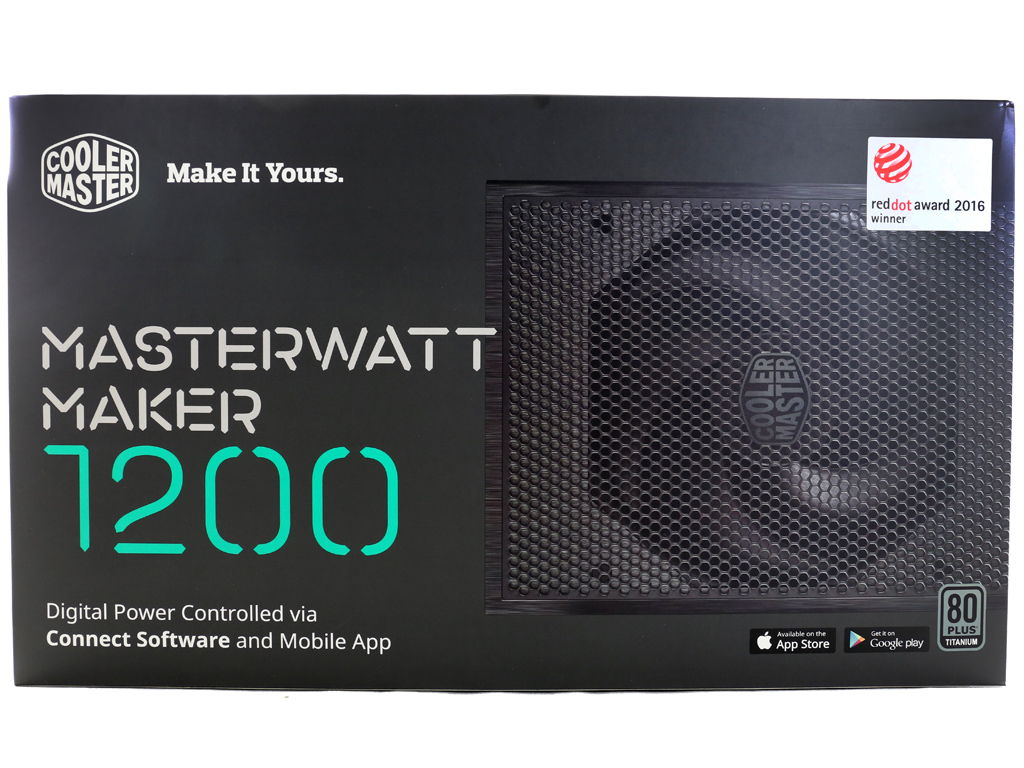
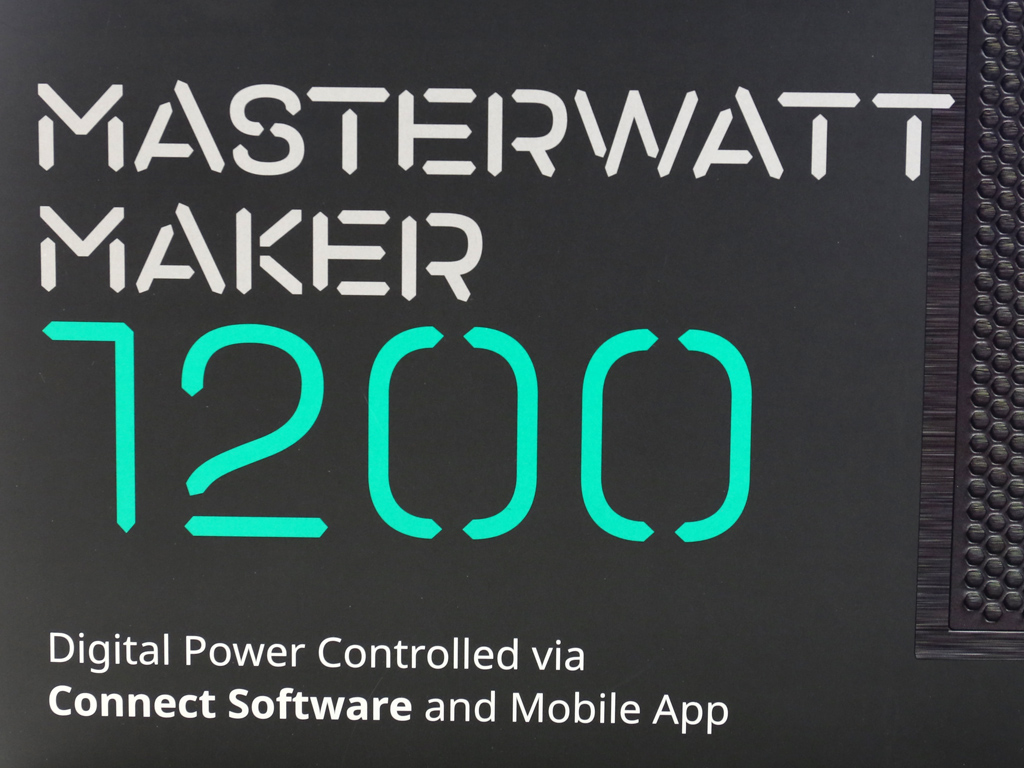


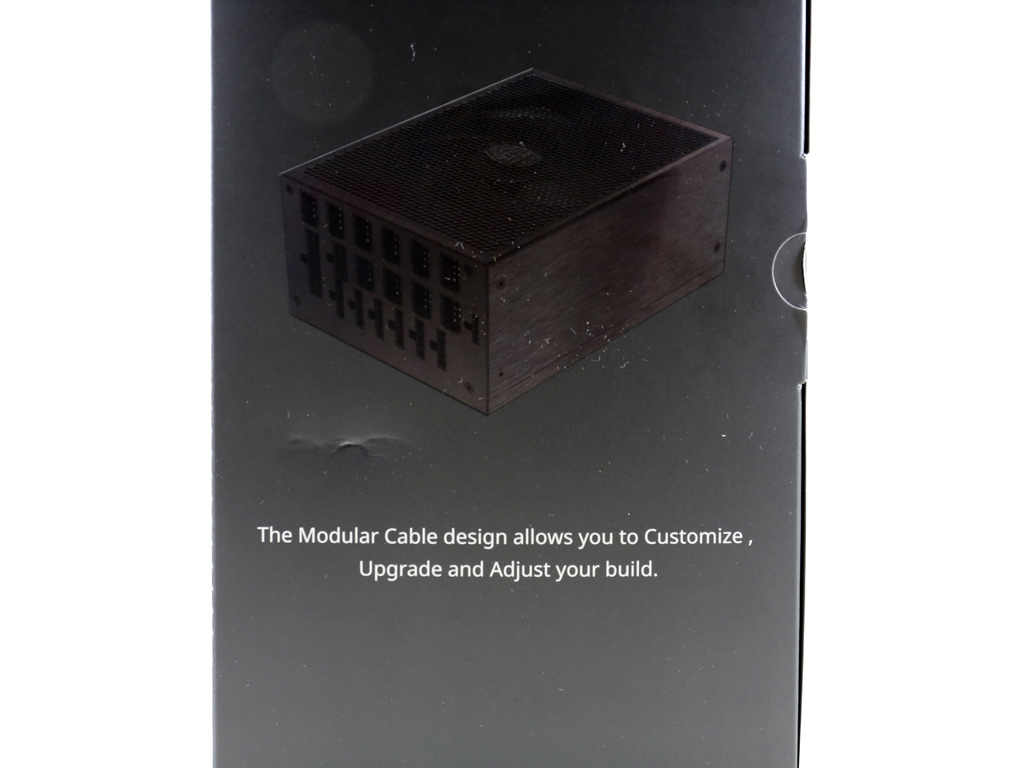
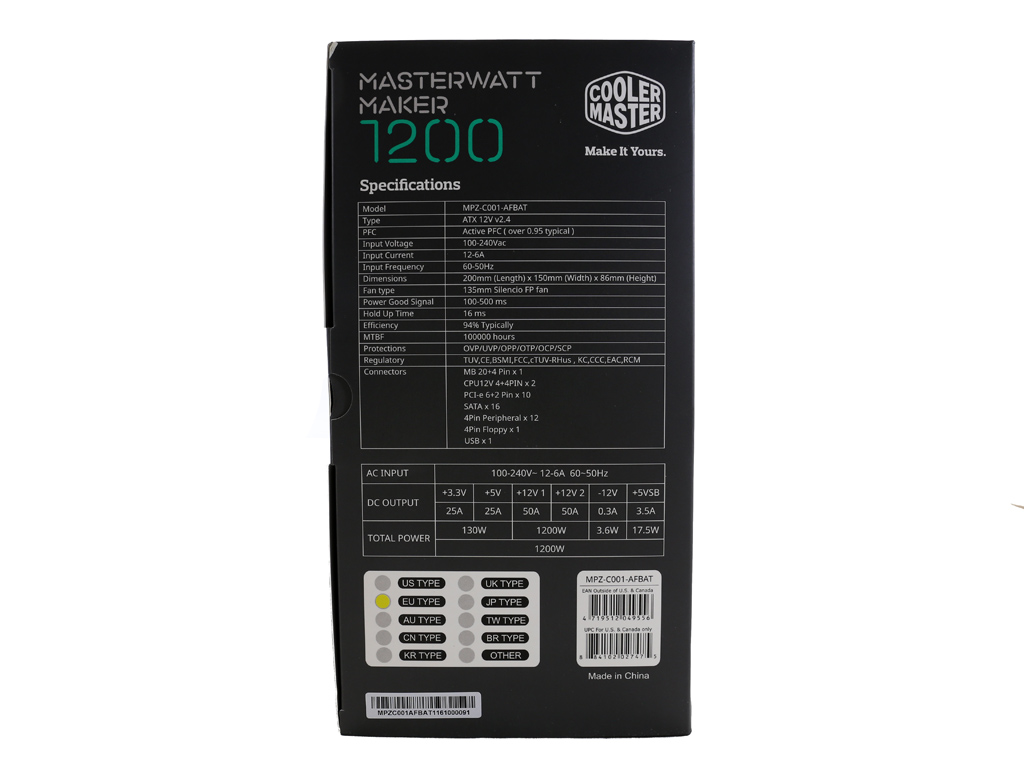
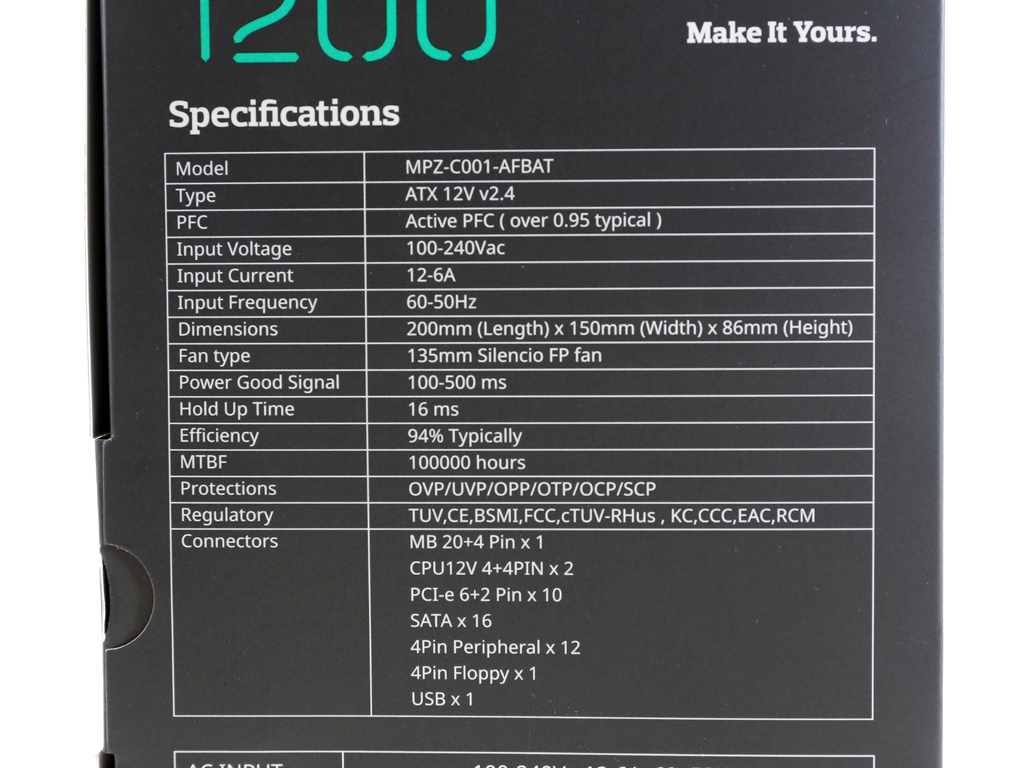
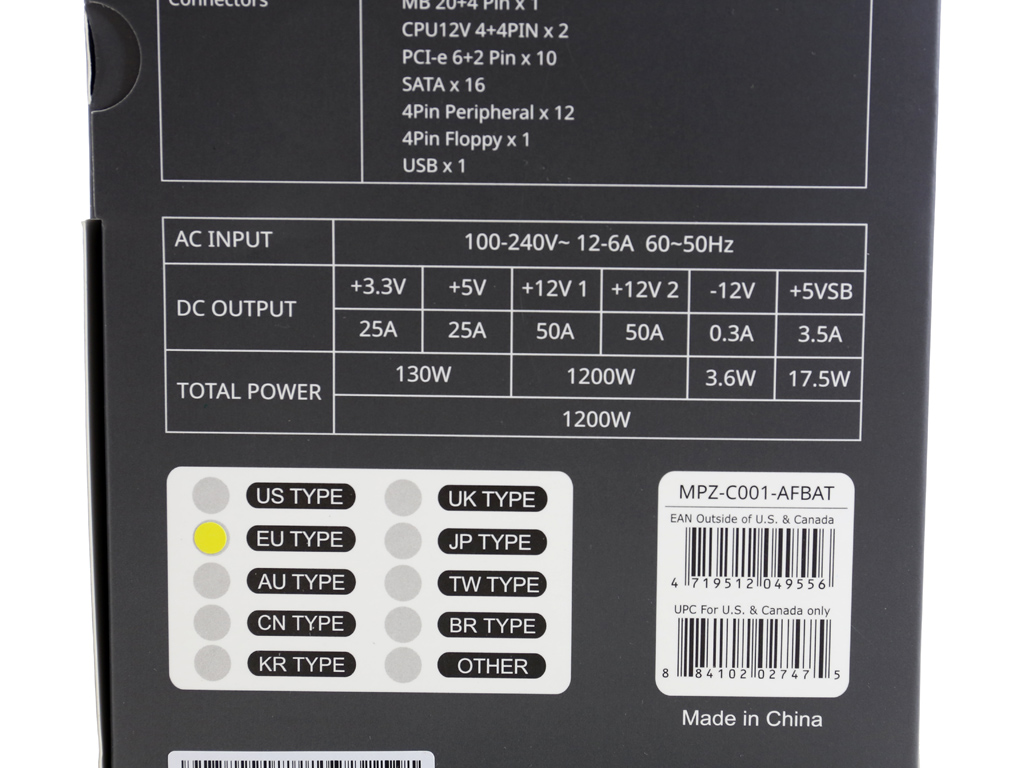

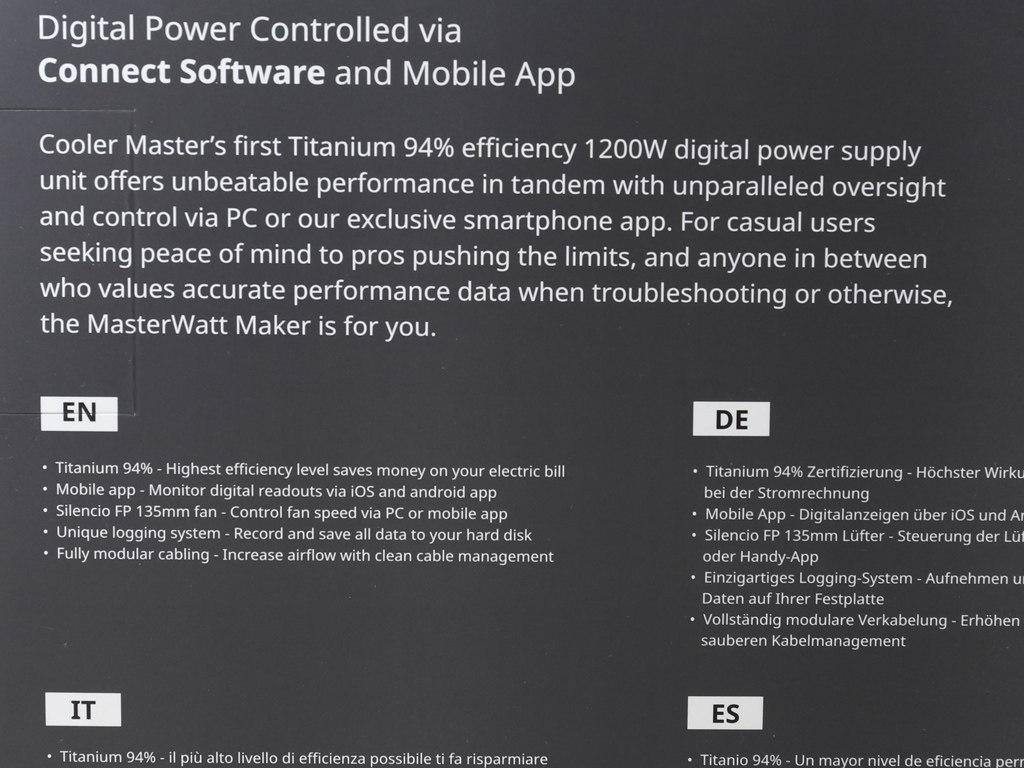
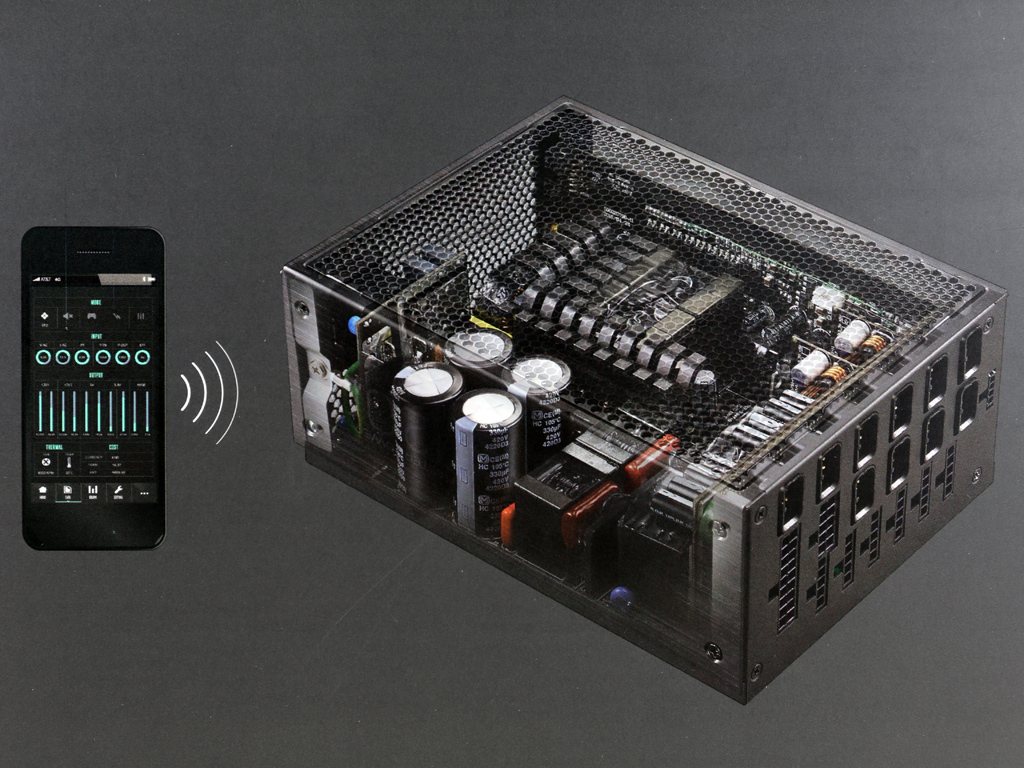
The box is huge. On its front is a picture of the PSU with the fan grille facing sideways. The model number is shown in big letters, while in the top-right corner a label informs us of the Red Dot Design Award award that this PSU earned. The 80 PLUS Titanium badge is in the bottom-right corner, and right next to it Cooler Master informs us that the mobile version of the Connect app is compatible with iOS and Android operating systems. The specifications table and relevant power details are depicted on one of the two sides of the box. Finally, around back, Cooler Master lists the unit's most interesting features in several languages, and on the same side a picture depicts the wireless monitoring technology, along with a view of the PSU's internals.
Contents


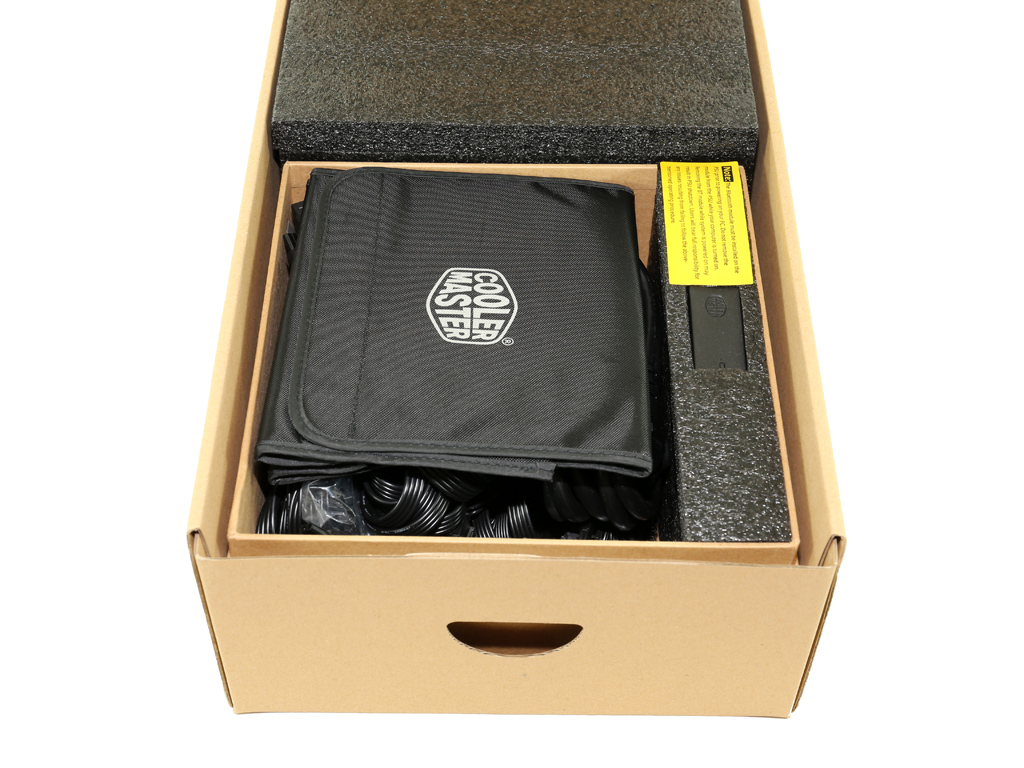
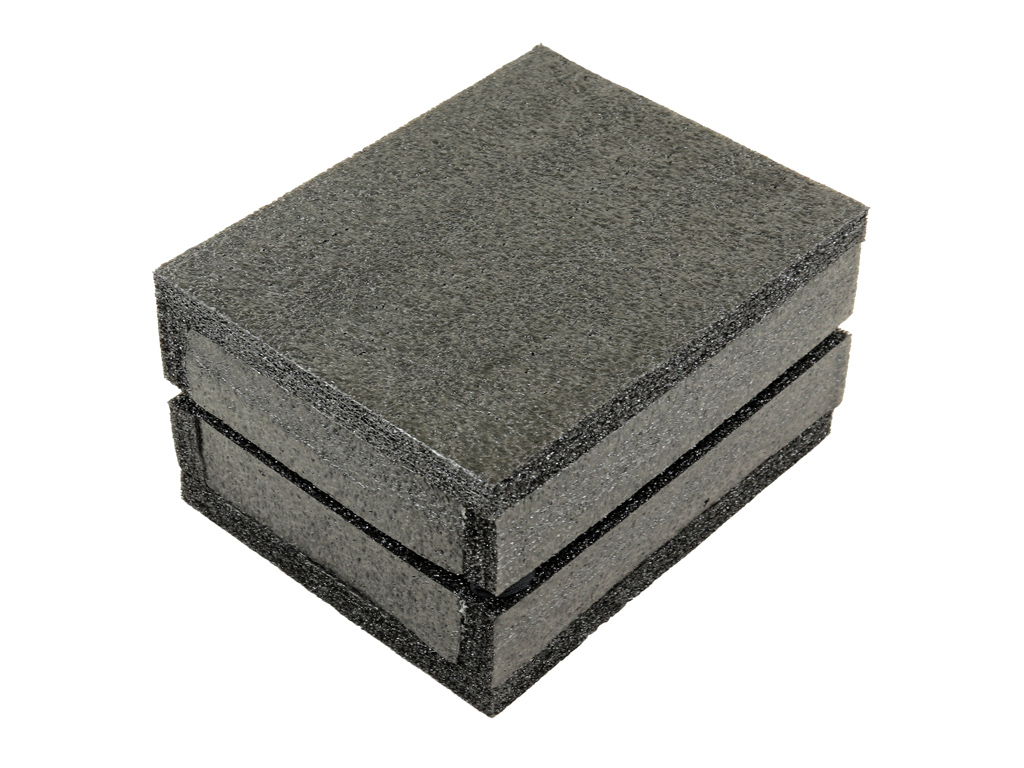
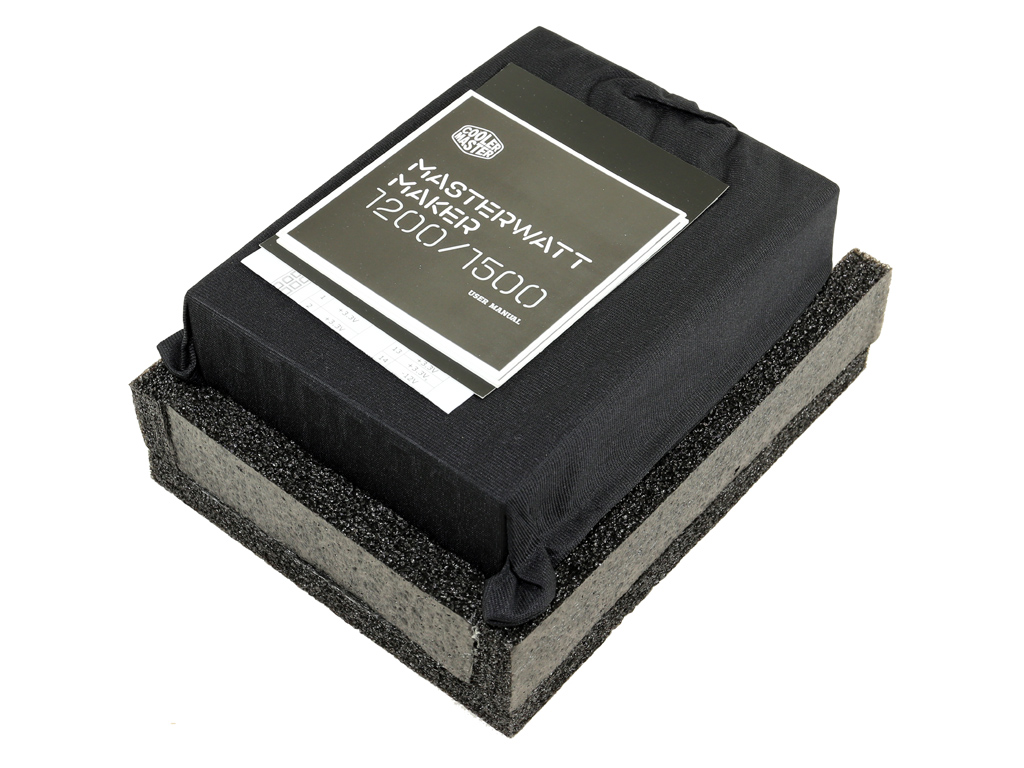
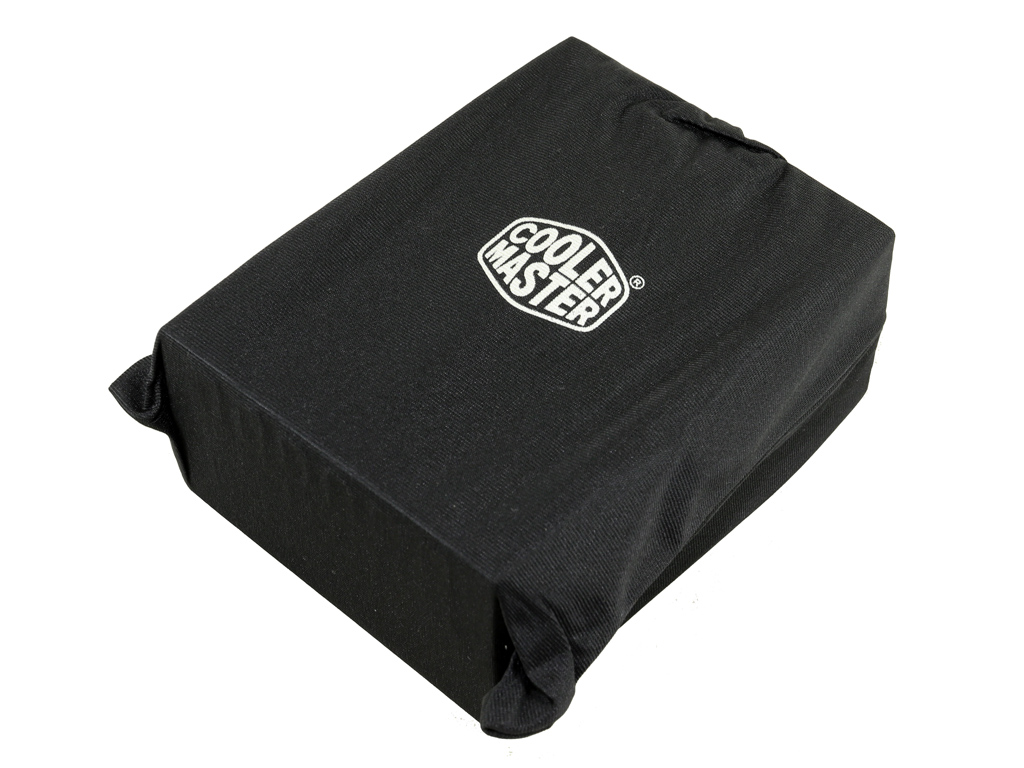
The box's sleeving hides a sturdy cardboard that effectively protect its contents. The PSU itself is surrounded by packing foam and is also stored in a nice cloth bag.

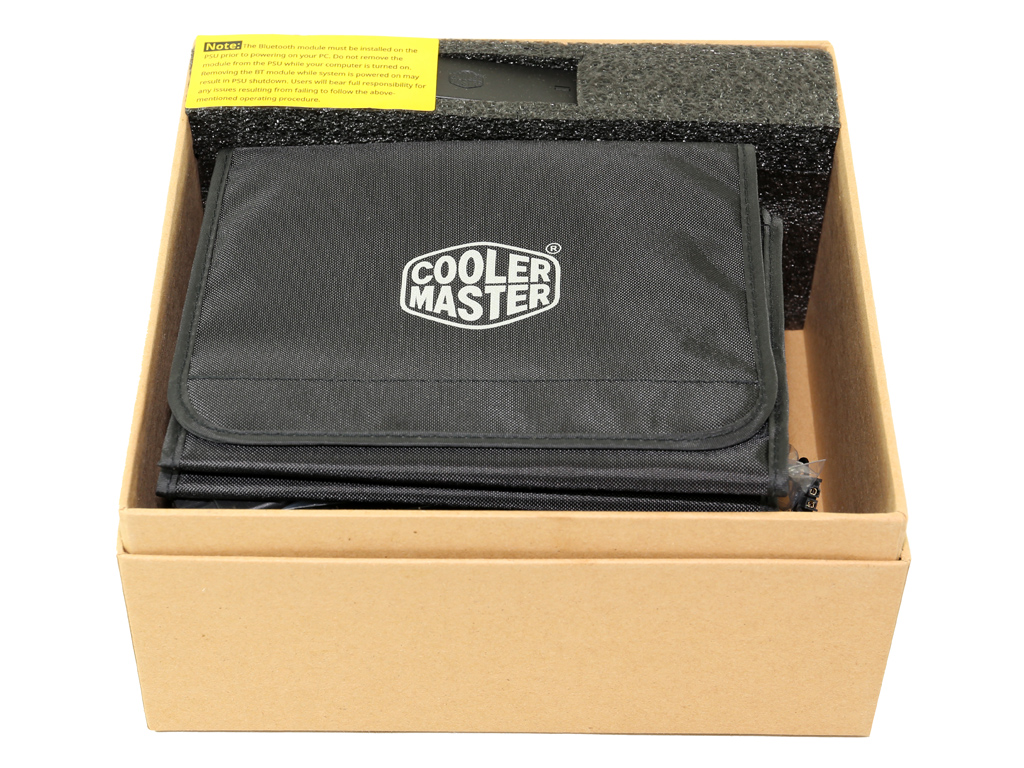
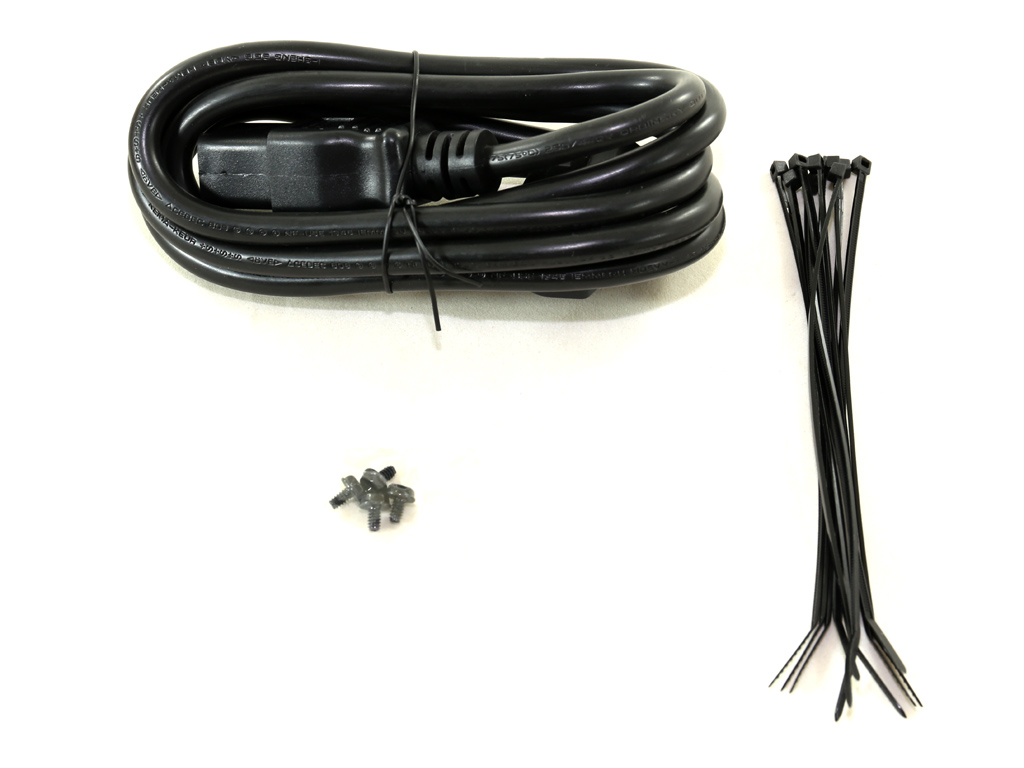



A box contains all bundled accessories, including modular cables inside of a nylon pouch, several zip ties, an AC power cord, a set of fixing bolts, a user's manual, and a warranty leaflet. In such an expensive product we would like to also see a case badge and several Velcro straps.
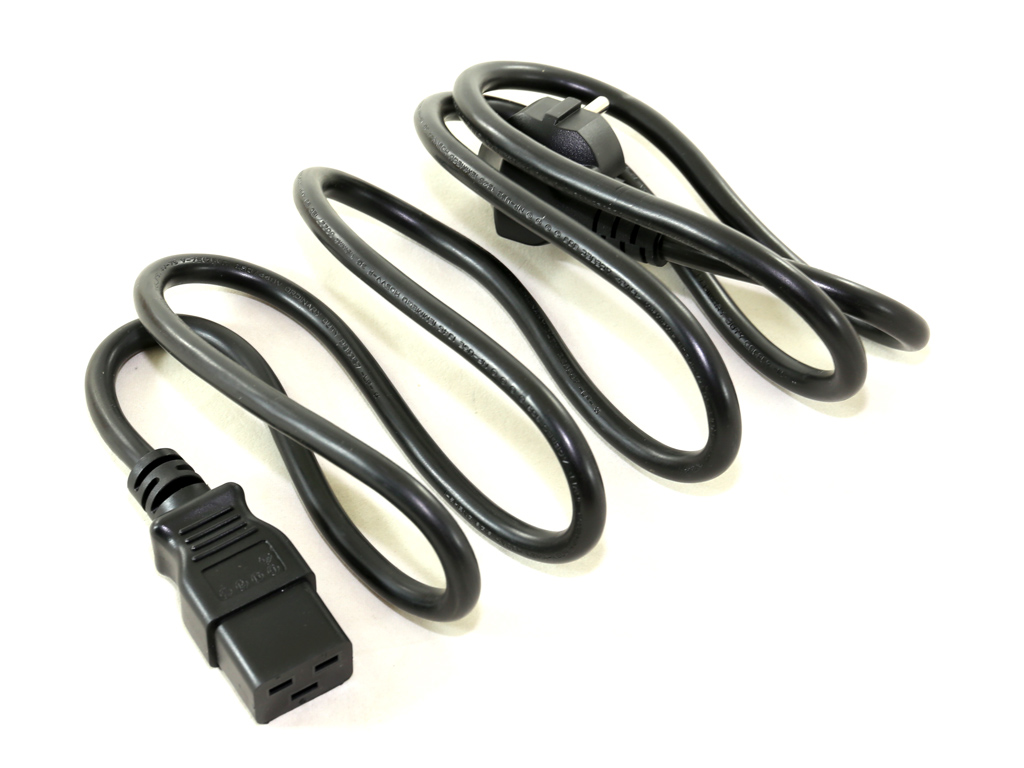


A heavy-duty C19 power cord accompanies the PSU. This is probably overkill for a Titanium-rated 1.2 kW PSU, but it's better to be safe than sorry. The cable is able to handle up to 16A, while normal household sockets are restricted to 15A.
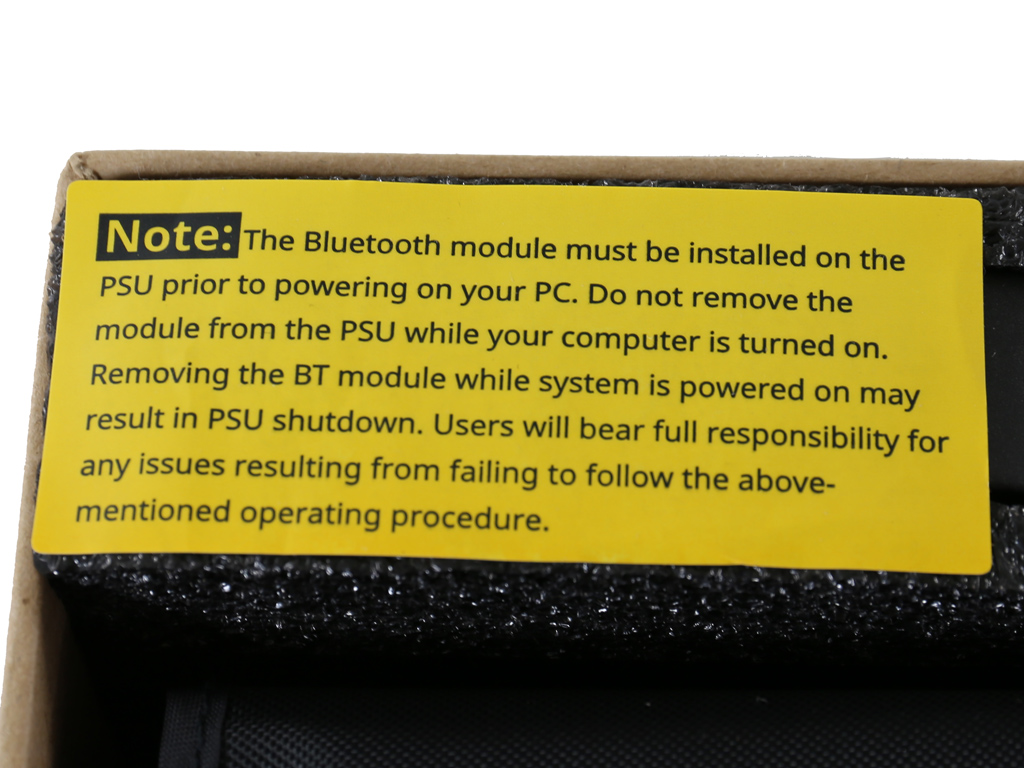

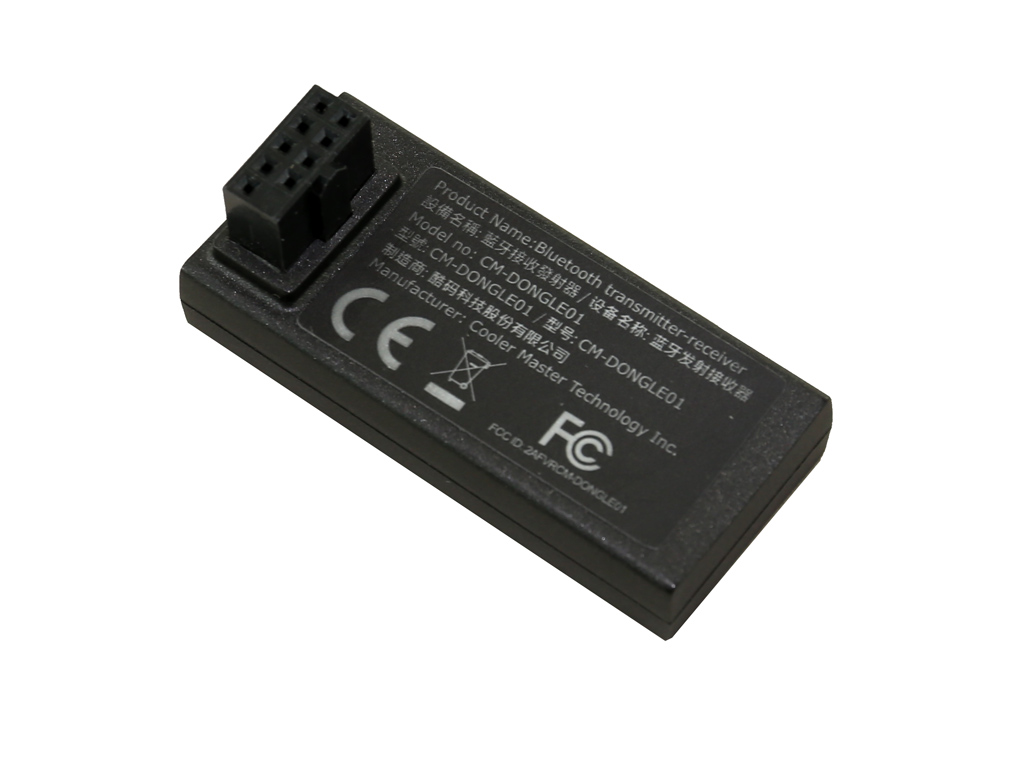
Cooler Master informs us that the Bluetooth module should be installed on the PSU prior to powering the system up. You should not remove the module while the system is in operation, since that can cause the PSU to shut off.
Exterior
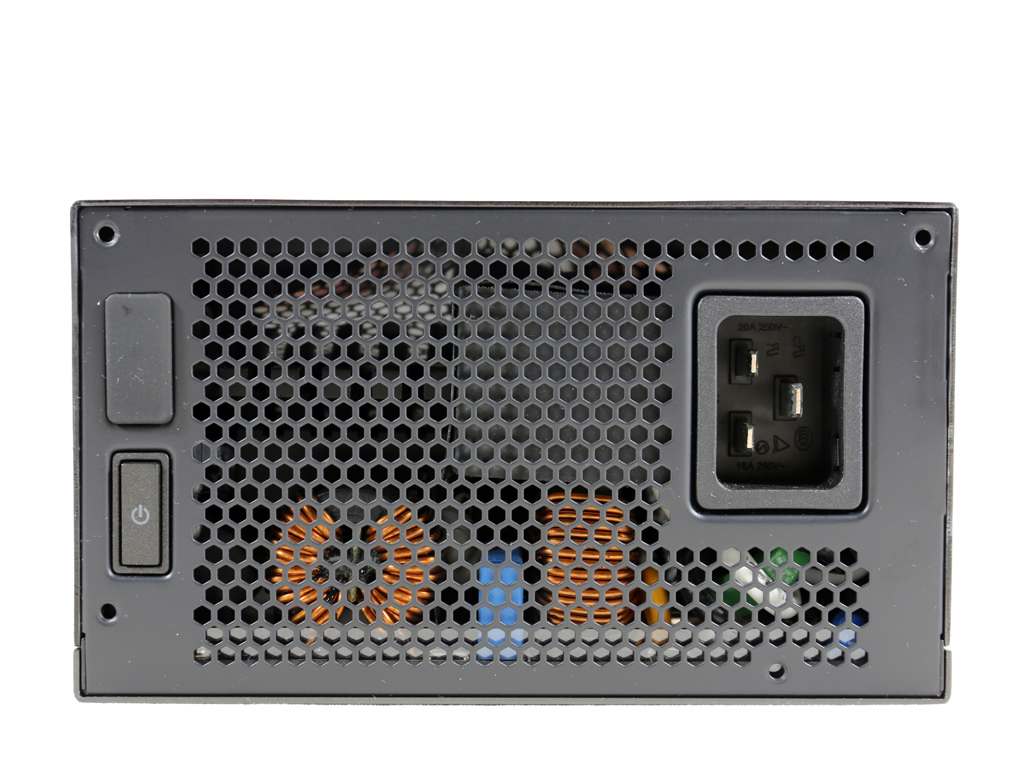
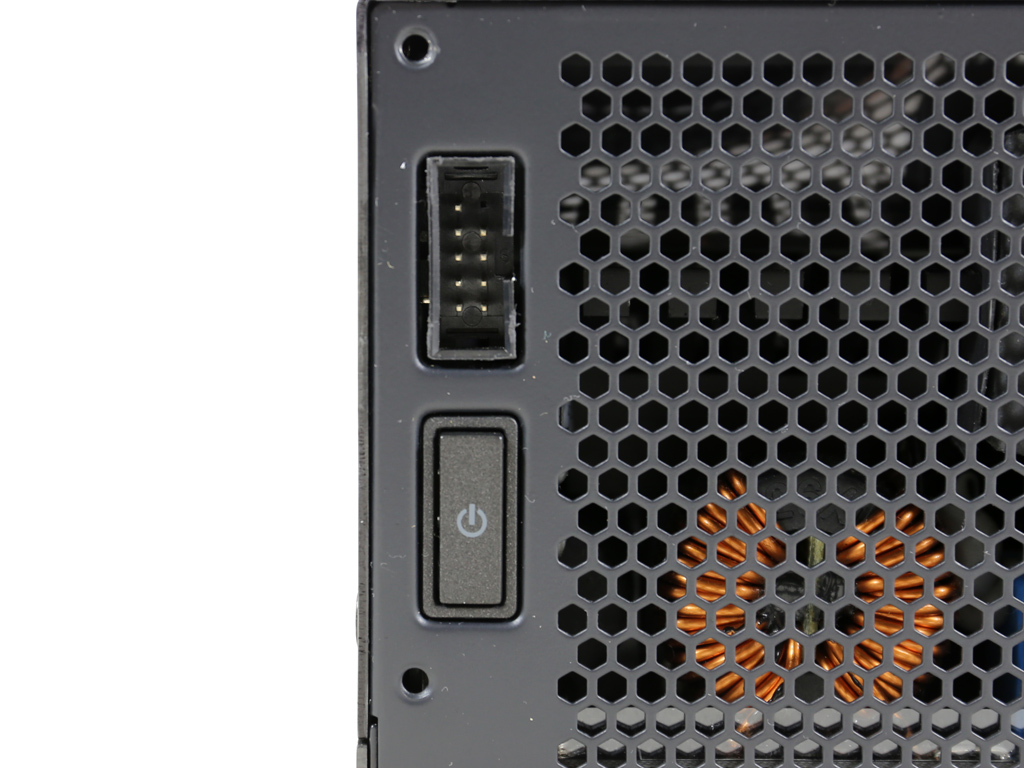
Up front, the socket for the Bluetooth module is right above the power switch. Instead of a rocker, Cooler Master uses a push-button loaded-spring switch.


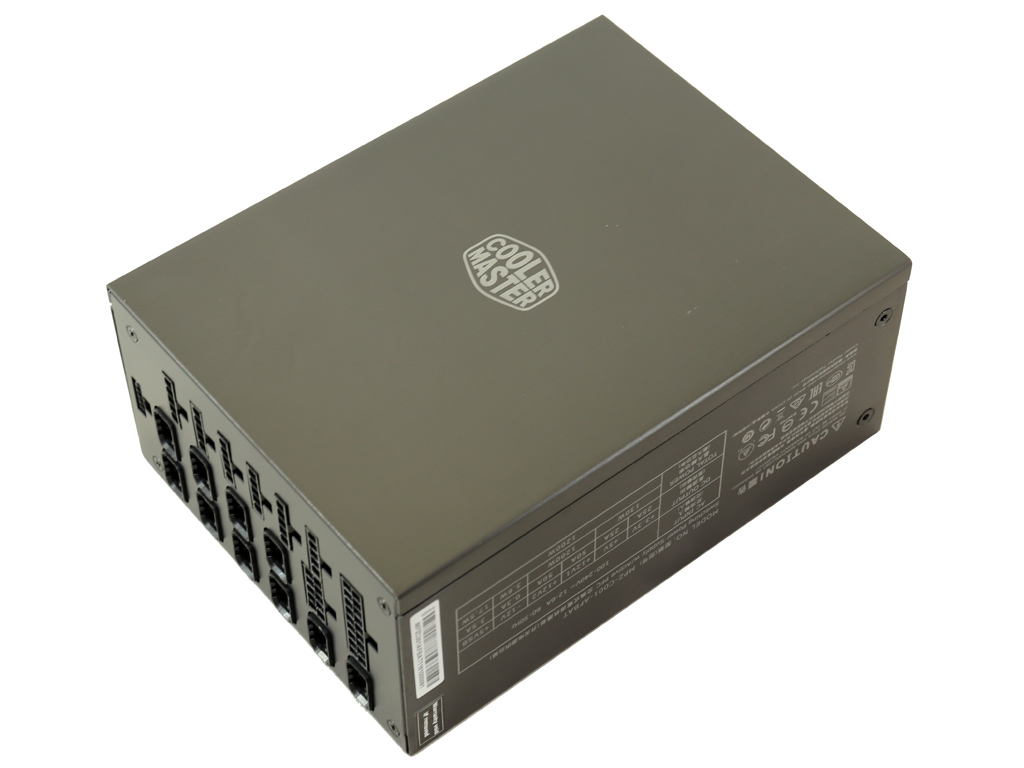
On one side is the power specifications table, while on the other side is the model description. Finally, on the bottom Cooler Master's logo is kept small to avoid altering the aesthetics.
Get Tom's Hardware's best news and in-depth reviews, straight to your inbox.



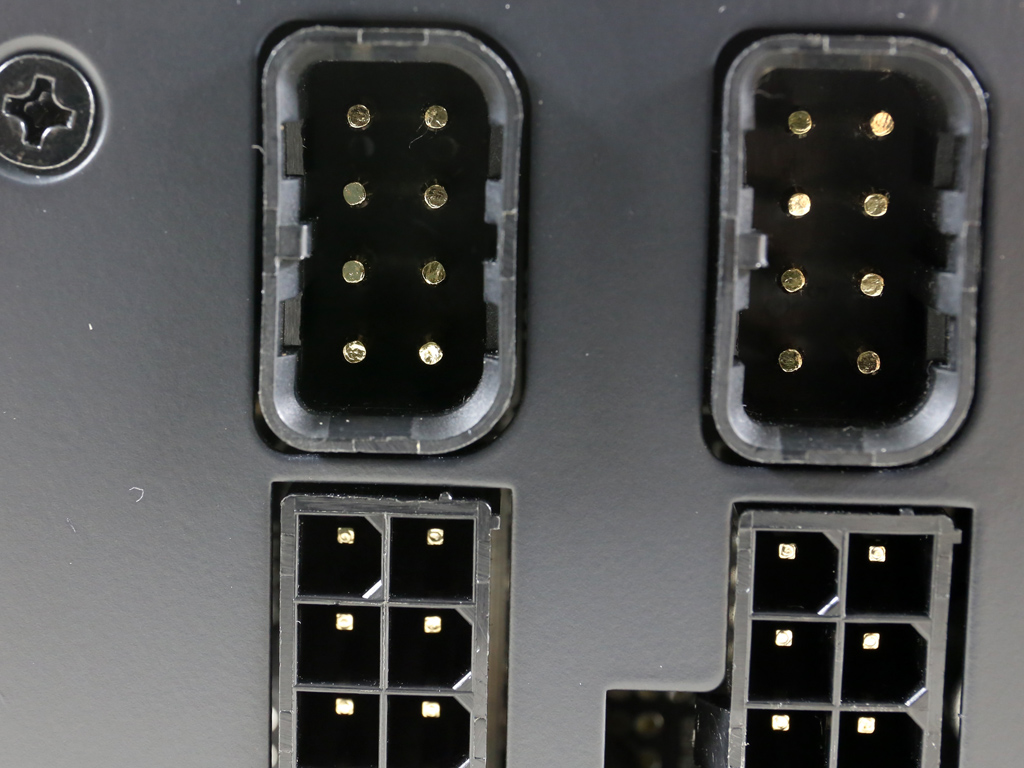
Around back, the modular panel hosts specially designed sockets with thicker pins that can handle increased amperage compared to normal ones.
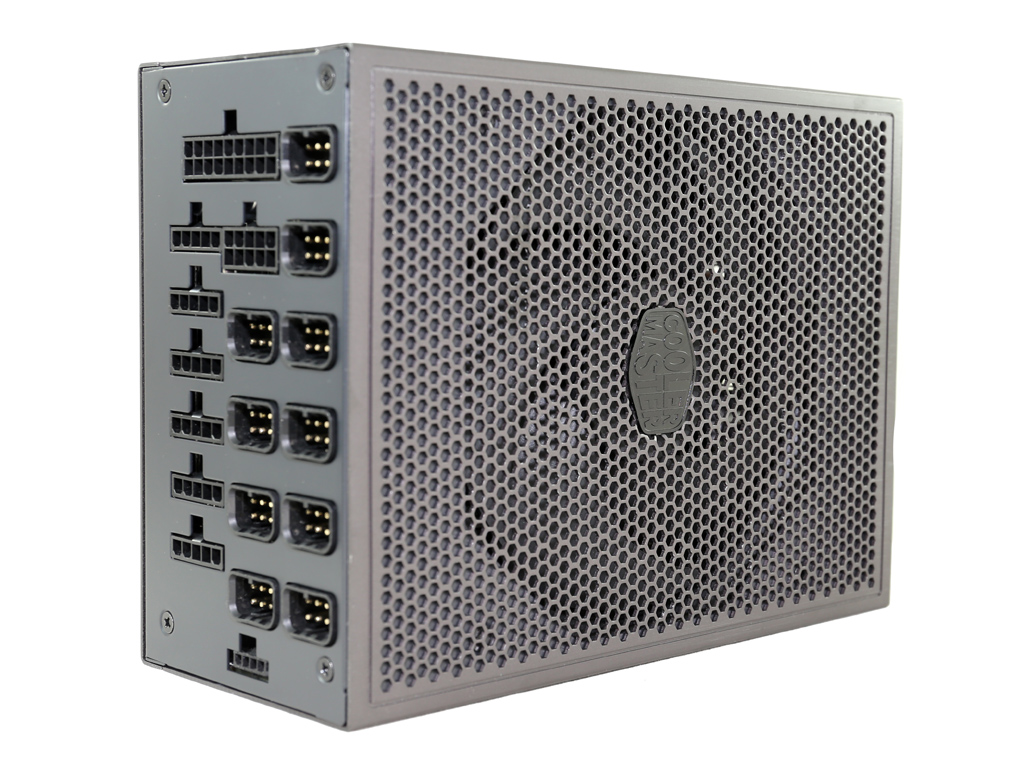
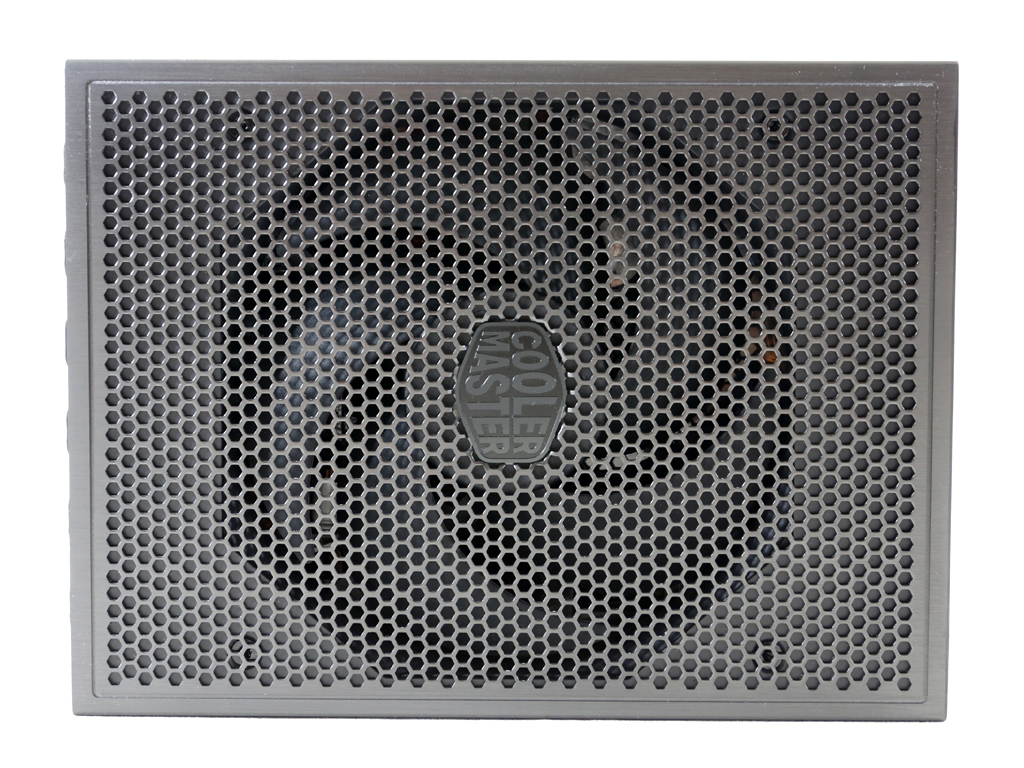
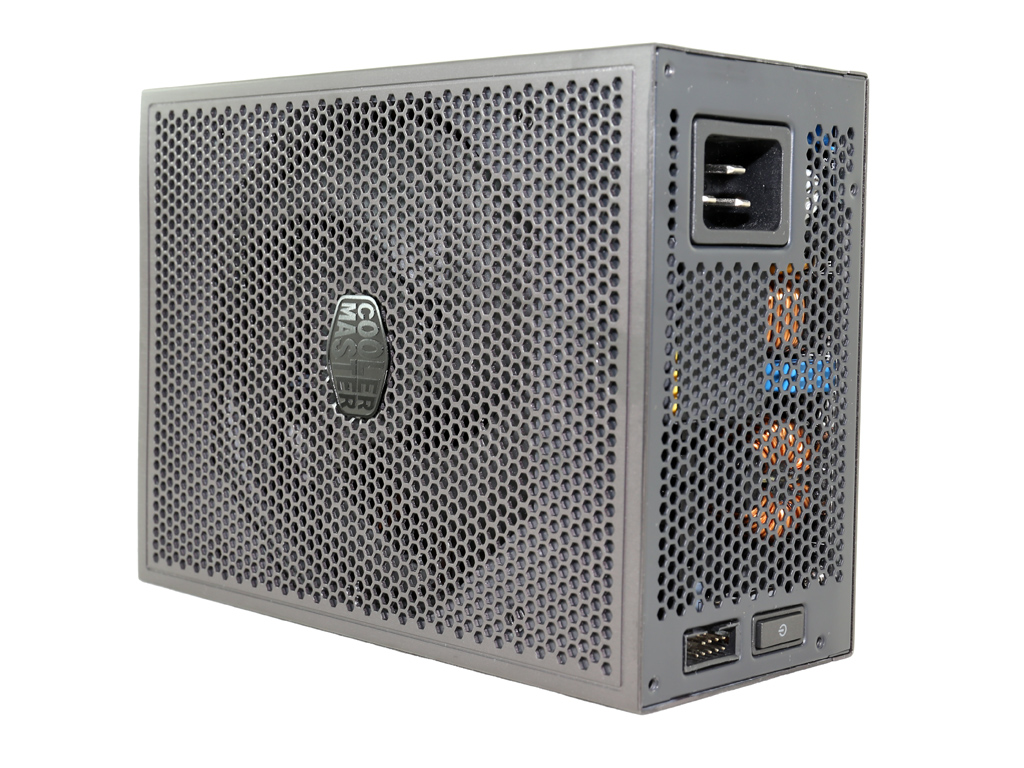
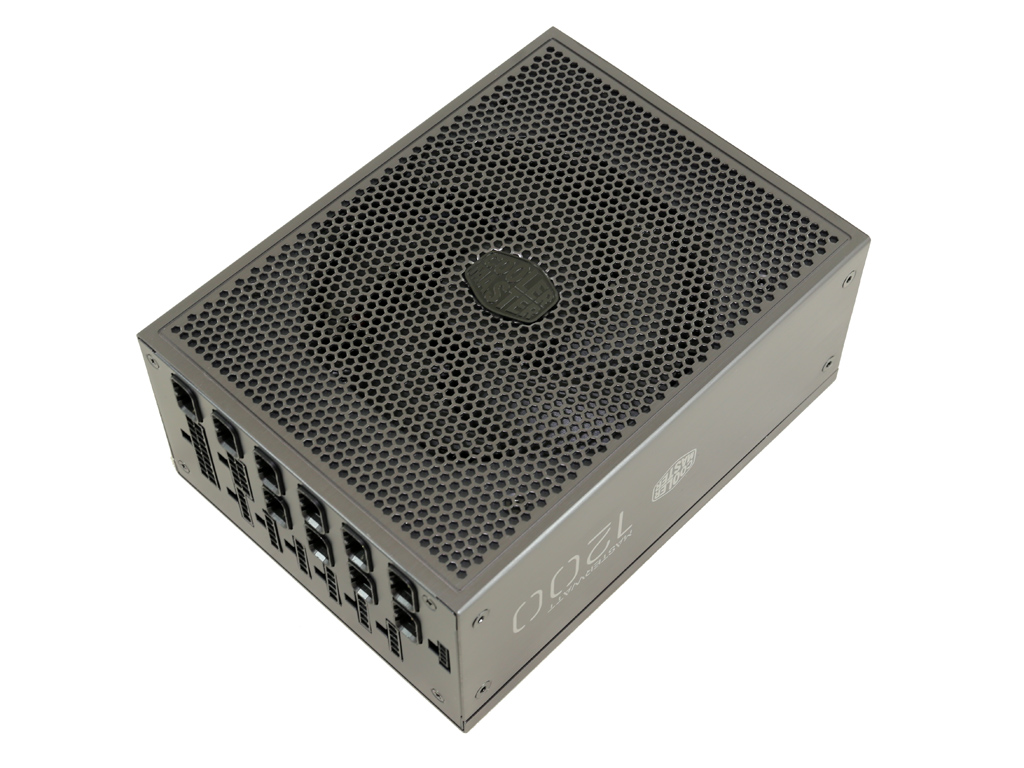

The external design is interesting, and the brushed finish is really nice, justifying in some small way this product's premium price.
Cabling

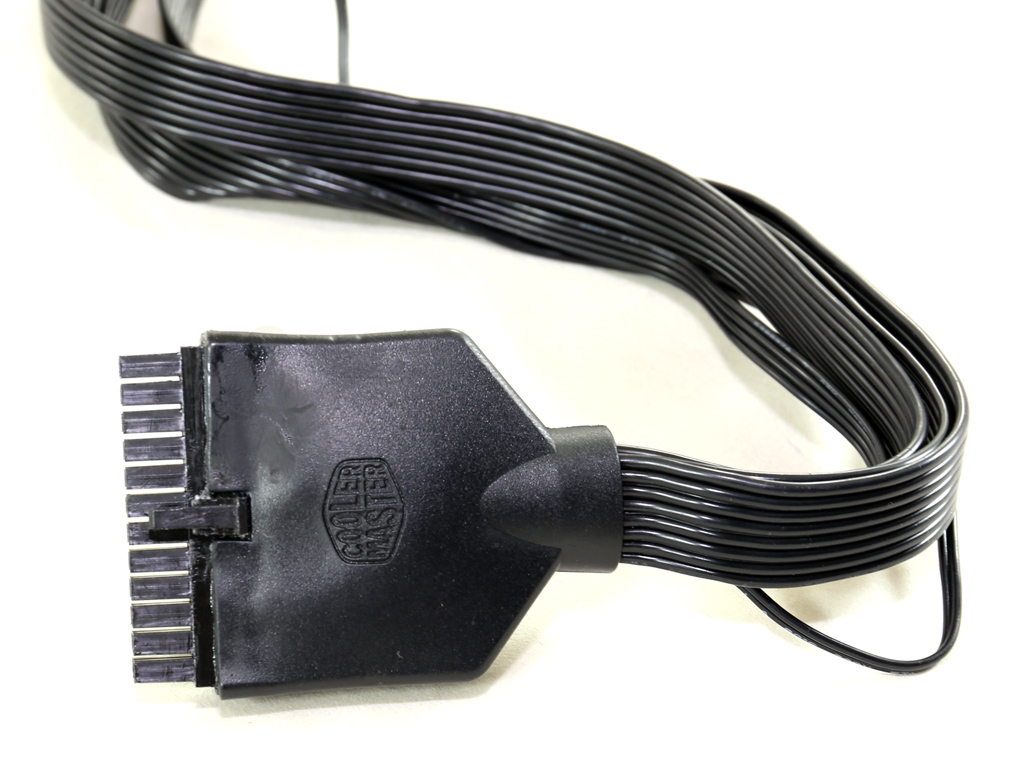
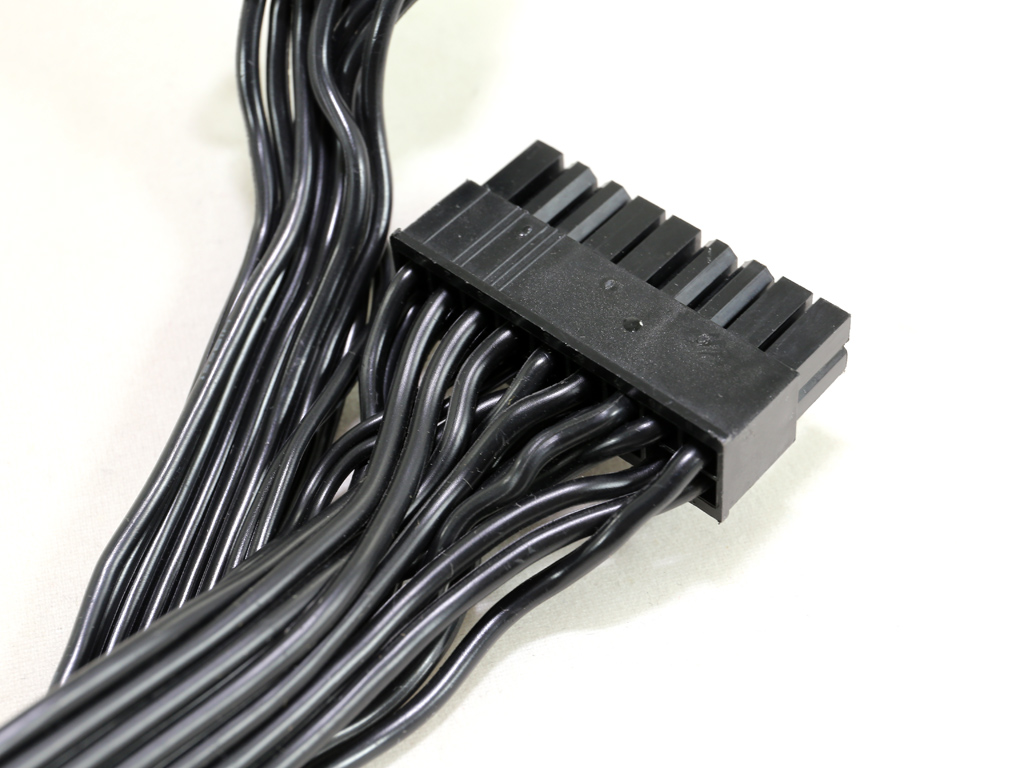
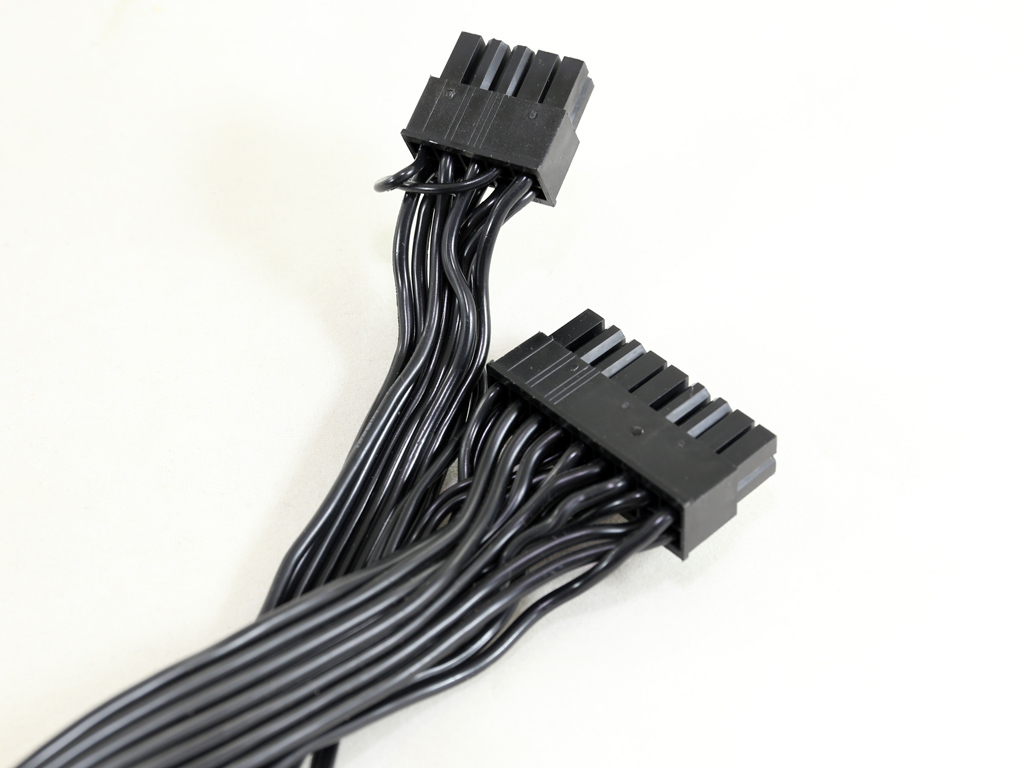
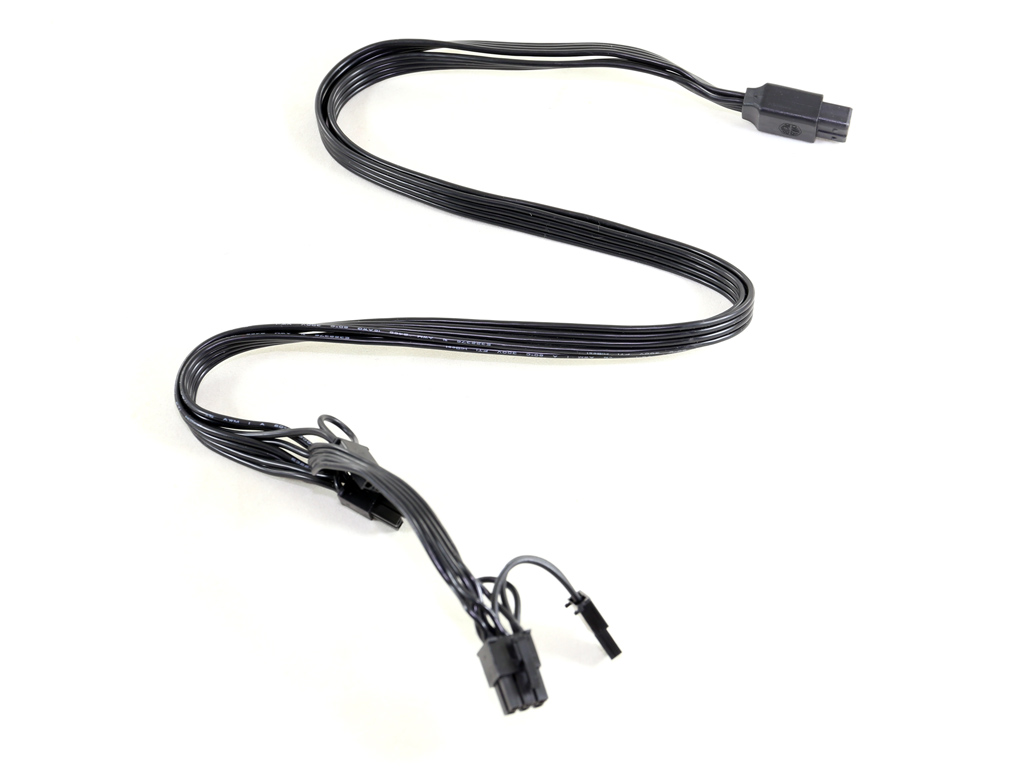
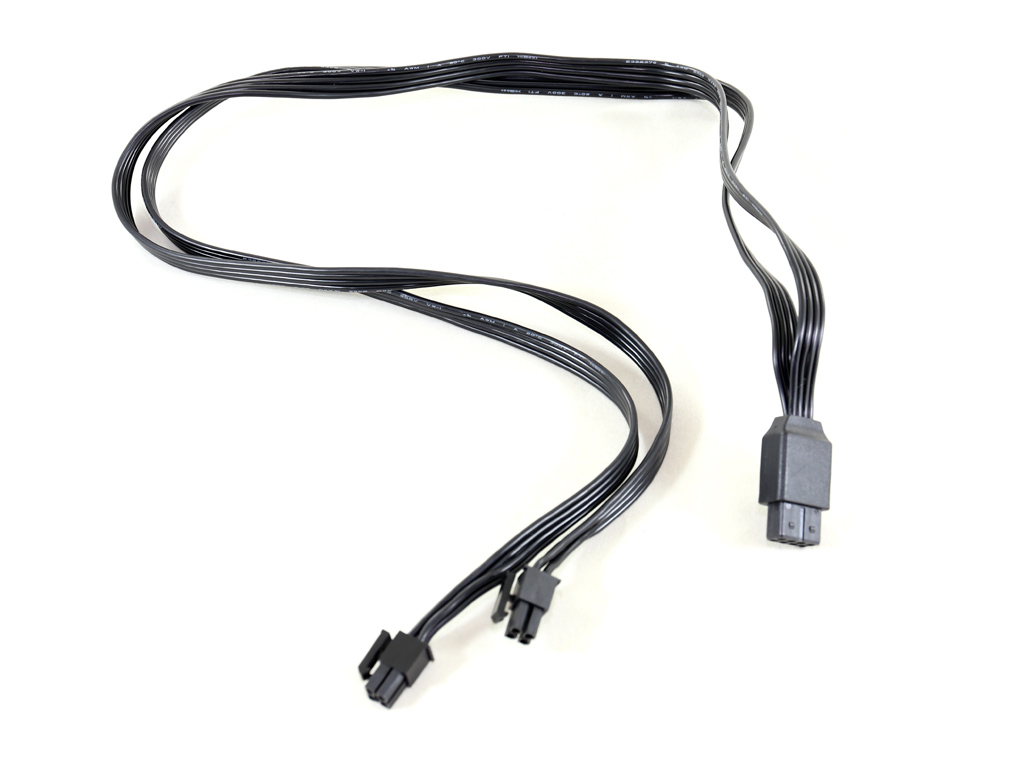
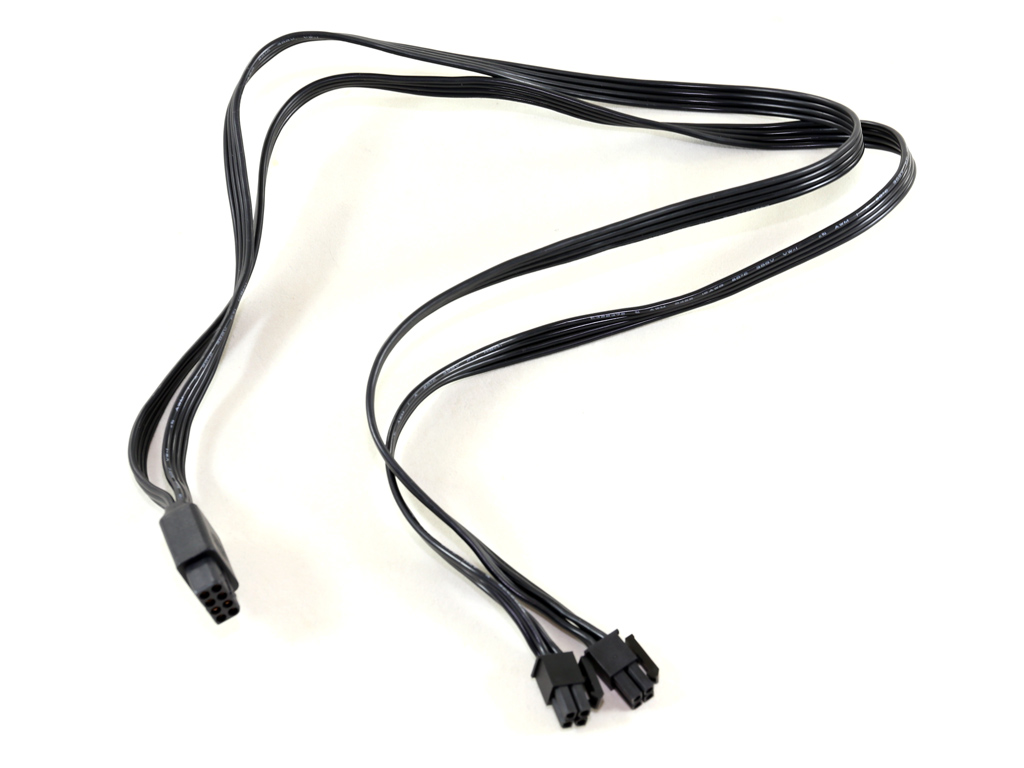

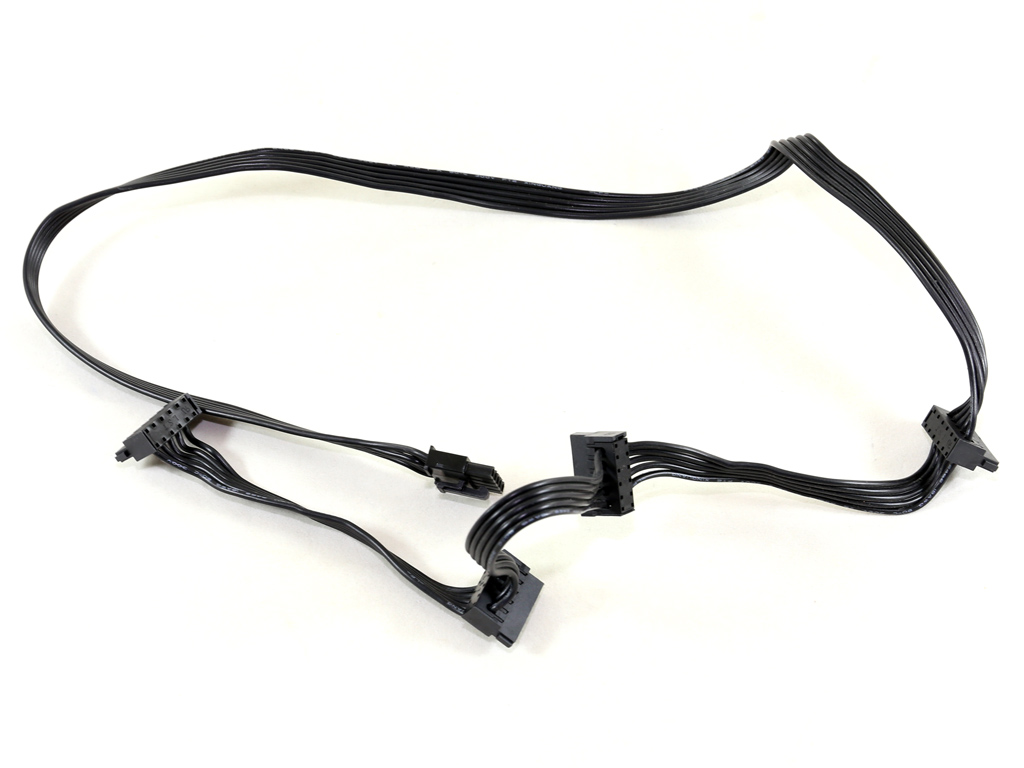
The cables are stealth and flat. Moreover, the large plastic cover on the 24-pin ATX connector hides several polymer caps. In general we would like to see higher cable quality in such an expensive PSU.
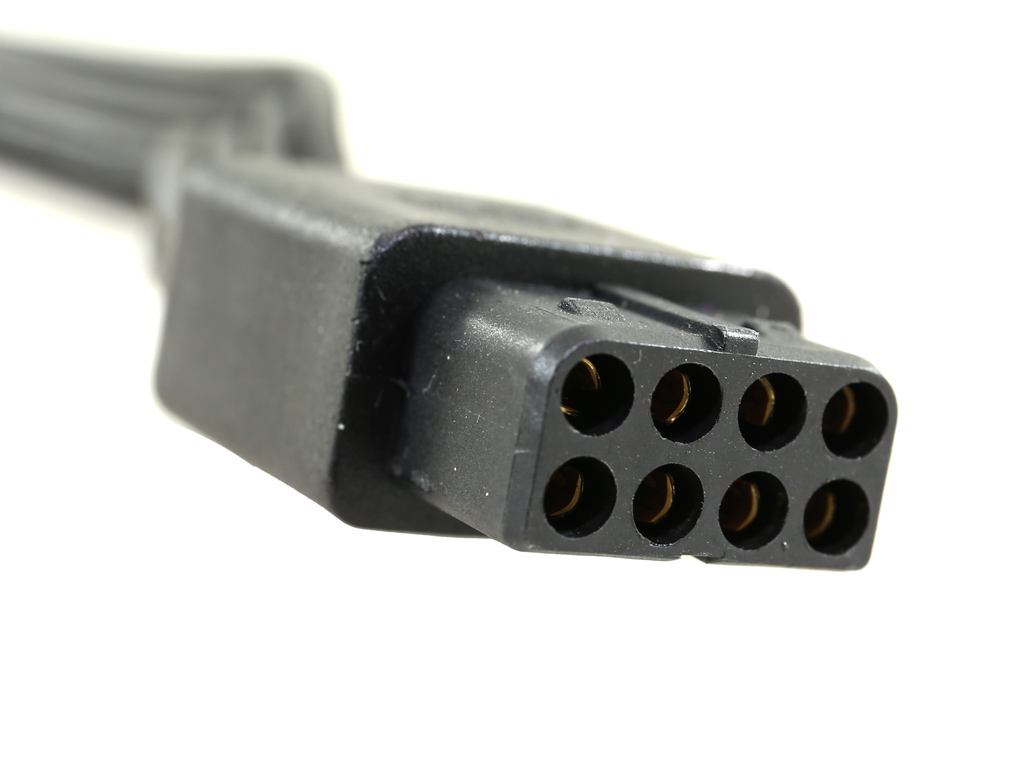
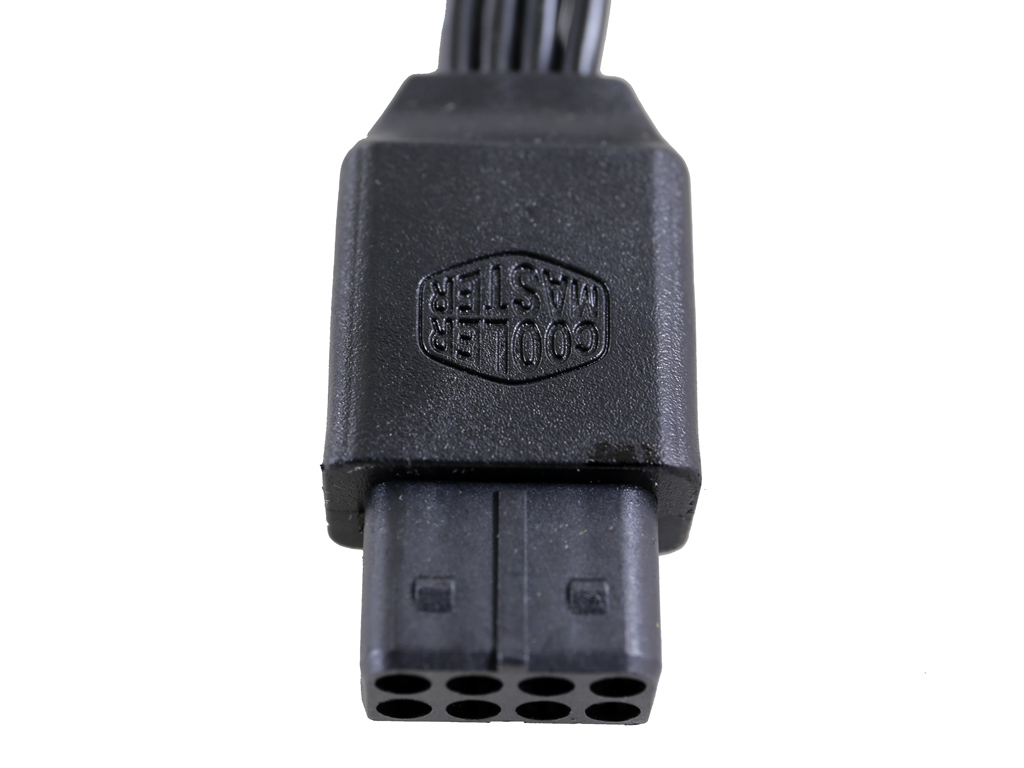
As mentioned, the connectors can handle increased amperage compared to normal Molex connectors. The plugs are also upgraded in order to offer increased functionality.
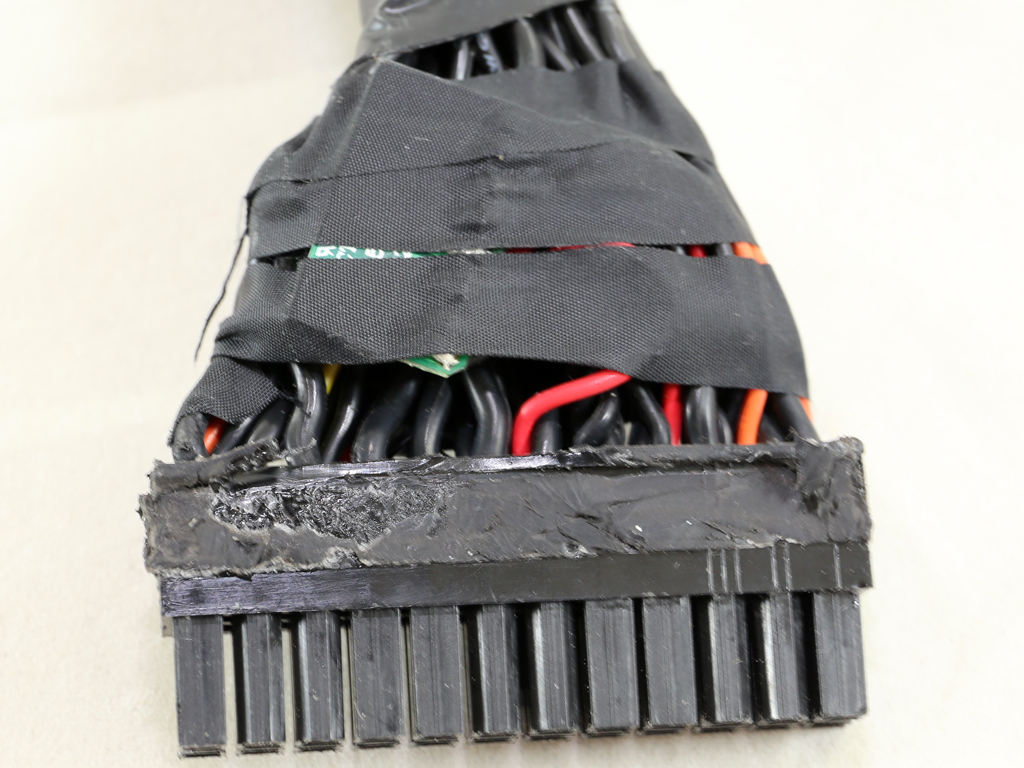


We removed the 24-pin ATX connector's rubber housing to take a look underneath and found a couple of small boards that host four Nichicon polymer caps each, providing an extra ripple filtering layer.
Current page: Packaging, Contents, Exterior, And Cabling
Prev Page Cooler Master MasterWatt Maker 1200 PSU Review Next Page Cooler Master Connect Software
Aris Mpitziopoulos is a contributing editor at Tom's Hardware, covering PSUs.
-
Onus Shades of the GX line; Coolermaster swings for the fences, but a competitor (pick one) in the outfield snags it and throws this one out trying to stretch a single to second base.Reply -
MasterMace CM doesn't get to put a $450 price tag on something that isn't in the same park. That voltage regulation is disappointing.Reply -
turkey3_scratch A lot of hype and little delivery for that price tag of course. Lower that price down to $200 and then we may be talking. The efficiency under low loads was quite poor. I'd like to bash the 5VSB regulation, though that's going to be unimportant and unrealistic with the majority of consumers, having load changes on that rail. Though if you are charging multiple devices I'd rather have it at 5V than 4.75V.Reply
At least the transient response performance was really good. The PWR_OK signal, eh. Aris, do you think that transient filter is really enough? I have a feeling it would fail EMI testing, only 4 y caps, 4 x caps, and 2 cm chokes on the unit.
Overall, Cooler Master paired with the wrong OEM. -
Aris_Mp the transient filtering stage looks complete since it has more than the required X caps, however you can never know unless you actually test it. I have the equipment and knowledge but I lack the time to do it :)Reply -
turkey3_scratch What are the exact requirements? I know what the ATX spec says but you have units like the FSP Hydro G 750 that failed by a good margin with 4 y caps, 2 x caps, and 2 cm chokes. So when talking about a 1200W unit with 4 y caps, 4 x caps, and 2 cm chokes, those 2 extra x caps are enough to do the trick?Reply -
Nuckles_56 The performance per dollar chart was great, it showed how badly overpriced this unit is and that there is a lot which could be improved on for the money spent on the unitReply -
Andi lim It's seem like the solid polymer caps on front side modular PCB's not from Nichicon, I think it belongs to Unicon taiwan ( UPT series ).Reply -
jimmysmitty Reply18352433 said:CM doesn't get to put a $450 price tag on something that isn't in the same park. That voltage regulation is disappointing.
Sadly it is more than the AX1500i, lower efficiency and specs overall and a lower warranty (7 year vs 10 year).
If someone is going to spend that much on a PSU It would be better to go for the Corsair.